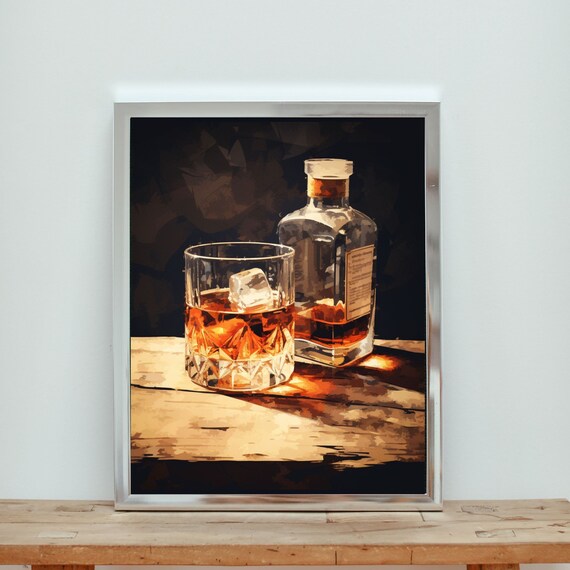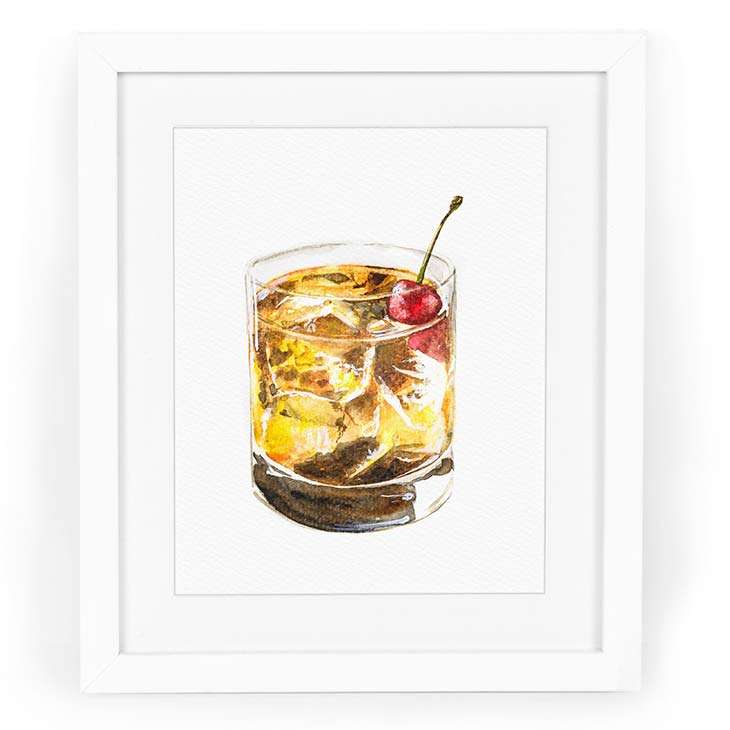The Significance of Whiskey Art in Celebrating Heritage and Craftsmanship in the Beverage Industry
The detailed partnership in between whiskey art and the party of heritage and craftsmanship within the drink market can not be overstated. With thoughtfully made tags and bottles, bourbon brands envelop their historical origins and the artisanal skills that specify their production techniques.
The Historical Roots of Whiskey
At the heart of scotch's attraction lies an abundant tapestry of historical origins that trace back to ancient worlds. The beginnings of whiskey can be connected to the distillation methods of the Sumerians and Babylonians around 2000 BCE, where very early types of fermented grain drinks began to emerge. Nevertheless, it remained in the Middle Ages that the art of distillation advanced substantially, particularly in Ireland and Scotland, bring about the creation of scotch as we recognize it today.
The term "whiskey" itself obtains from the Gaelic word "uisce beatha," suggesting "water of life." This phrase underscores the cultural importance of bourbon in Celtic societies, where it was typically linked with rituals, celebrations, and common bonding. By the 15th century, purification came to be a recognized craft within reclusive areas, leading the way for the establishment of legal distilleries.
As trade paths broadened, scotch's appeal grew, transcending regional limits and catching the rate of interest of lovers worldwide. Realism Art. This historic trip mirrors not just the craftsmanship behind bourbon production however likewise its integral role in social and social contexts, noting it as a significant beverage throughout background
Artistic Expression in Branding
Bourbon branding stands as an engaging junction of virtuosity and business, where aesthetic identification plays an essential role in shaping customer assumption. The visual appeals of whiskey tags, product packaging, and advertising and marketing products reflect not just the brand's story yet likewise its core values and heritage. Via artistic expression, distilleries communicate a story that resonates with customers, evoking emotions and sparking links.
The use of shade, typography, and imagery in branding offers to separate products in a saturated market. For instance, conventional motifs might evoke a sense of authenticity and workmanship, while modern layouts can symbolize development and forward-thinking. This calculated artistic direction boosts brand acknowledgment and loyalty, allowing customers to forge an individual partnership with the scotch they pick.
Moreover, creative expression in branding often functions as a party of regional heritage. Distilleries often include neighborhood symbols or historical referrals into their designs, producing a feeling of place that invites customers to engage in a broader cultural experience. Eventually, the virtuosity behind whiskey branding not only improves aesthetic allure but also enhances the general story of the brand, fostering a deeper recognition for the workmanship and heritage ingrained in each container.
Craftsmanship in Bottle Design
The virtuosity noticeable in whiskey branding extends beyond visual identity to include the workmanship associated with container layout. Each container acts as a vessel not simply for the spirit within, however additionally for the tale it outlines its origin, tradition, and high quality. The layout process needs careful focus to information, as components such as material, closure, and shape contribute considerably to the overall perception of the bourbon.
Workmanship in container style includes selecting premium glass that can enhance the bourbon's shade and clearness, while also providing a responsive experience for the consumer. The silhouette of the bottle have to be both useful and visually appealing, typically reflecting the heritage of the brand name. Lots of distilleries opt for one-of-a-kind forms or embossed logo designs that evoke a feeling of credibility and history.
In addition, the label layout and typography play a critical function in interacting the brand's story. Bourbon Art. A well-crafted container not just astounds the home customer's eye however likewise reinforces the brand's commitment to top quality and tradition. This way, the craftsmanship of container layout comes to be a vital facet of the whiskey experience, combining virtuosity with an extensive respect for heritage
Cultural Value of Whiskey Art
Commemorating tradition and craftsmanship, the social importance of bourbon art transcends plain looks, linking with the historical and social stories of the areas from which it comes from. Each bottle works click as a canvas, portraying the unique tales, mythology, and practices that have actually shaped regional whiskey-making techniques. The elaborate designs usually reflect the heritage of the distillers, including symbols and themes that reverberate with the culture and values of their communities.

Furthermore, scotch art plays a vital duty in common gatherings and parties, functioning as a substantial link between people and their shared experiences. By valuing the artistry in scotch packaging, consumers grow a deeper understanding and respect for the craft, inevitably enriching their pleasure of the drink itself.
Modern Trends in Bourbon Presentation
In current years, the discussion of scotch has actually developed to show modern tastes and trends while still recognizing typical craftsmanship - Limited Edition. Distilleries are significantly concentrating on aesthetic aspects that boost the overall drinking experience, connecting the void in between heritage and modernity
Innovative bottle styles have arised, often incorporating sustainable materials and artistic labels that tell compelling tales. Lots of brand names currently team up with neighborhood artists, infusing their products with unique visual expressions that reverberate with customers. Furthermore, limited-edition launches are usually packaged in collectible containers, including worth and allure for aficionados.

Verdict
To conclude, scotch art acts as a vital conduit for sharing the heritage and workmanship fundamental in the beverage market. Via detailed branding, innovative bottle designs, and culturally considerable imaginative components, bourbon brand names effectively honor their customs and attach with customers. This imaginative story not just boosts the appreciation of whiskey but also reinforces community identity and satisfaction among manufacturers. Eventually, bourbon art plays a crucial role in preserving and celebrating the abundant social tapestry of whiskey-making.


Craftsmanship in container layout includes selecting top quality glass that can enhance the whiskey's color and clearness, while likewise offering a tactile experience for the customer. In this method, the craftsmanship of container style becomes a vital facet of the scotch experience, combining creativity with a profound respect for heritage.
In conclusion, bourbon art serves as an essential channel for expressing the heritage and workmanship intrinsic in the beverage market.